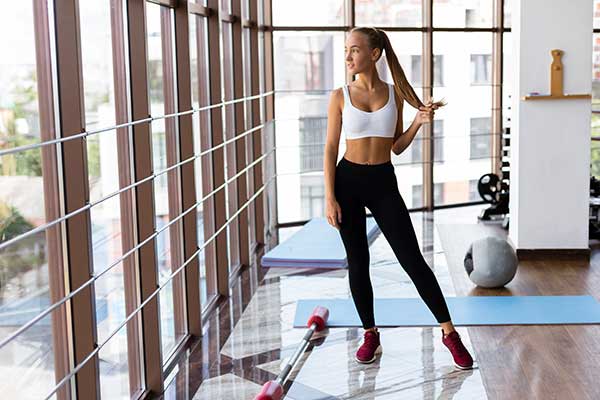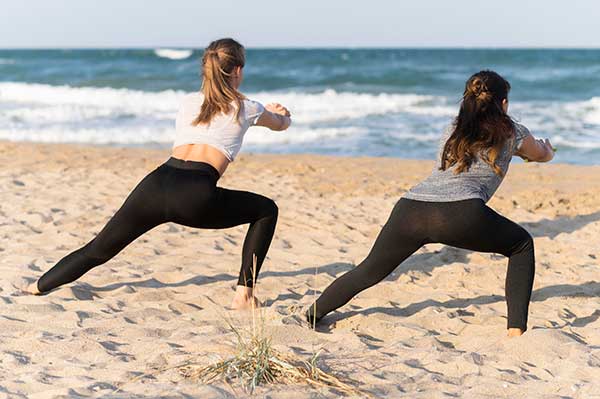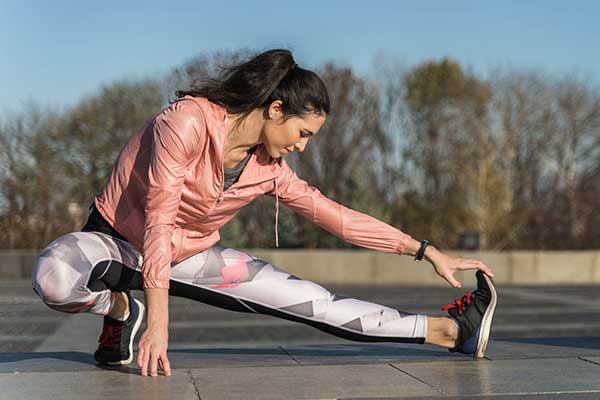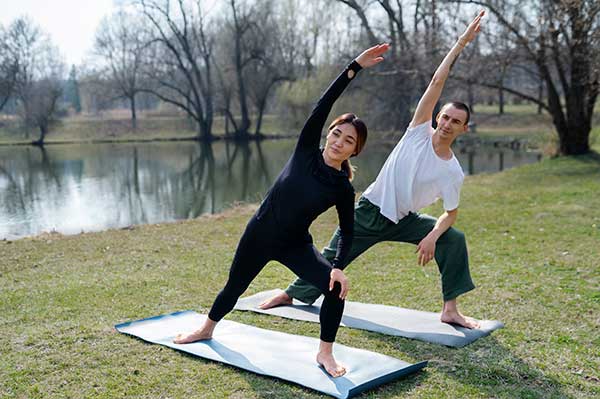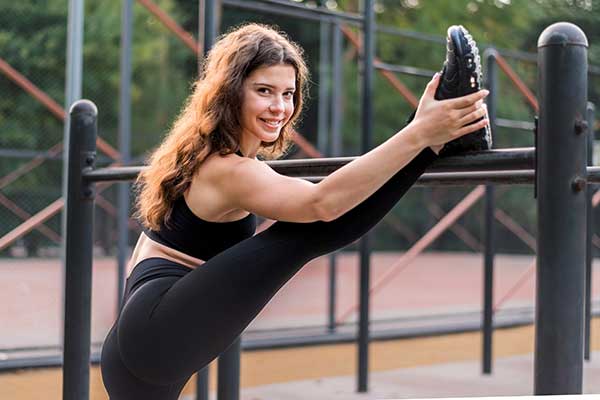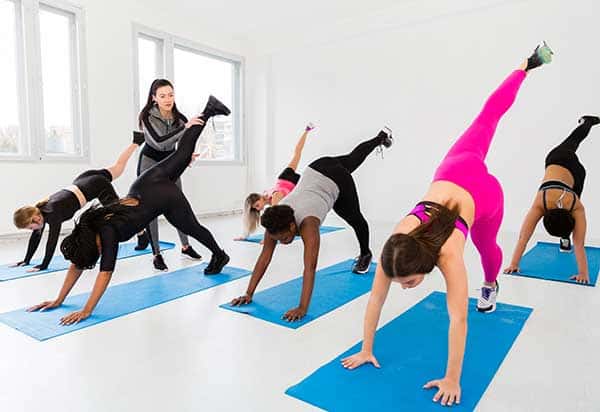Hip Adductor Stretching Exercises
Are you feeling tightness in your hips after a long day of sitting or an intense workout? You’re not alone. Many people experience discomfort in their hip adductors, the group of muscles that play a vital role in stabilizing and moving our legs. Stretching these muscles can enhance flexibility, improve mobility, and even alleviate pain. If you’re looking to keep your body functioning at its best, incorporating hip adductor stretching exercises into your routine is essential. Let’s dive deeper into what these muscles are all about and explore some effective stretches to help you feel more limber and free!
What are Hip Adductors and Why are They Important?
Hip adductors are a group of muscles located on the inner thighs. They include the adductor longus, brevis, and magnus, as well as the pectineus and gracilis. These muscles work together to pull your legs toward the midline of your body.
Their primary function is crucial for various activities like walking, running, and jumping. Strong hip adductors provide stability during movements that involve lateral motion.
In addition to mobility, these muscles support proper posture. Tight or weak hip adductors can lead to imbalances that affect overall movement patterns.
Maintaining flexibility in this area can help prevent injuries and enhance athletic performance. A little attention to hip adductor health goes a long way in improving daily life activities and sports-related tasks.
Common Causes of Tight Hip Adductors
Tight hip adductors can stem from various factors. One common cause is a sedentary lifestyle. Sitting for long periods can lead to stiffness in the muscles around your hips.
Another culprit is improper exercise habits. Overtraining without sufficient stretching often tightens these muscle groups, especially for athletes focusing on leg-intensive activities.
Additionally, poor posture plays a significant role. When you slouch or sit awkwardly, it affects the alignment of your hips and legs, contributing to tension in the adductors.
Age may also contribute to tighter muscles as natural flexibility tends to decrease over time.
Certain injuries or surgeries can lead to compensatory patterns that affect hip mobility and strength, resulting in tightness where it shouldn’t be present. Addressing these issues early can help maintain healthy movement patterns and prevent further complications down the line.
Benefits of Stretching Your Hip Adductors
Stretching your hip adductors offers a range of benefits that can enhance both mobility and overall comfort. Improved flexibility is one of the most noticeable advantages. With regular stretching, you can increase your range of motion, making everyday activities more fluid.
In addition to flexibility, these stretches help alleviate tightness in the hips. This can reduce discomfort during workouts or daily tasks like sitting for long periods.
Furthermore, strong and flexible hip adductors contribute to better balance and stability. This is crucial not only for athletes but also for those who enjoy an active lifestyle or even just walking around town.
Incorporating hip adductor stretches into your routine may aid in injury prevention. By keeping these muscles supple, you minimize the risk of strains or pulls that could sideline you from physical activity.
Top 5 Hip Adductor Stretching Exercises
When it comes to enhancing flexibility, incorporating hip adductor stretching exercises is essential. These movements not only relieve tightness but also improve overall mobility.
The standing butterfly stretch is a fantastic choice. Stand tall and bring your feet together while bending your knees outward. This position opens up the hips beautifully.
Next, try the seated butterfly stretch. Sit on the floor with your soles pressed against each other and gently push down on your thighs for an effective deep stretch.
For those who prefer lying down, the supine frog stretch works wonders. Lie back, bend your knees, and let them fall open wide to feel that satisfying release in your inner thighs.
Half pigeon pose offers a wonderful blend of strength and flexibility for the hip muscles. It’s perfect for targeting deeper areas often overlooked by typical stretches.
Incorporate lateral lunge with reach into your routine. Step out to one side while reaching across with the opposite arm; this not only stretches but engages multiple muscle groups at once!
A. Standing Butterfly Stretch
The Standing Butterfly Stretch is an excellent way to target your hip adductors while also improving your overall flexibility. To perform this stretch, stand tall with your feet shoulder-width apart.
Slowly bend at the knees and bring the soles of your feet together in front of you, creating a butterfly shape with your legs.
Make sure to keep your back straight as you gently lower yourself into the stretch. Hold onto something sturdy for support if needed.
With each breath, focus on relaxing into the position. You should feel a gentle pull in your inner thighs but avoid any sharp pain.
Hold this pose for about 20-30 seconds before gradually coming back up to standing. Incorporating this stretch into your routine can enhance mobility and ease tension in those often-overworked muscles.
B. Seated Butterfly Stretch
The Seated Butterfly Stretch is a fantastic way to target your hip adductors while promoting flexibility and relaxation. To get started, find a comfortable seated position on the floor.
Begin by bringing the soles of your feet together, allowing your knees to gently fall outward. This natural opening mimics the wings of a butterfly, hence its name. Hold onto your feet for support as you sit up tall.
To deepen the stretch, slowly lean forward from your hips. Focus on keeping a flat back rather than rounding your spine. You may feel tension release in those inner thighs and hips with each breath.
Hold this position for 20-30 seconds or longer if it feels good. It’s important not to force yourself into any discomfort; listen to your body and ease into it gradually. The Seated Butterfly Stretch can be an excellent addition to any stretching routine!
C. Supine Frog Stretch
The Supine Frog Stretch is a gentle yet effective way to target your hip adductors. It promotes flexibility and relaxation in the inner thigh area, making it an ideal addition to your stretching routine.
To perform this stretch, lie flat on your back. Bring the soles of your feet together and let your knees fall outwards. You should feel a comfortable stretch in the groin and inner thighs.
For added comfort, place cushions or pillows under each knee if you find it challenging to relax into the position. Breathe deeply as you hold this pose; focus on releasing tension with each exhale.
Aim to stay in this position for 30 seconds to one minute while maintaining steady breathing. This helps deepen the stretch without forcing any discomfort. The Supine Frog Stretch not only opens up tight hips but also calms the mind after a long day.
D. Half Pigeon Pose
The Half Pigeon Pose is a fantastic way to stretch your hip adductors while also targeting the glutes and lower back. It’s perfect for those who spend long hours sitting or engaging in repetitive movements.
To perform this pose, start in a downward-facing dog position. Bring one knee forward, placing it behind your wrist while extending the other leg straight back. Keep your hips square as you settle into the stretch.
Focus on breathing deeply as you hold this position. You might feel tightness initially; take it slow and let your body ease into the stretch over time.
You can enhance this pose by folding forward, resting on your forearms or completely laying down if flexibility allows. This variation deepens the release in both hips and enhances relaxation throughout your body.
Remember to switch sides after holding for an adequate duration to maintain balance between both hips.
E. Lateral Lunge with Reach
The Lateral Lunge with Reach is a dynamic stretch that targets the hip adductors while also engaging other key muscles. This exercise enhances flexibility and stability in your lower body.
To begin, stand tall with your feet shoulder-width apart. Step to the right with your right foot, bending at the knee while keeping your left leg straight. As you lunge, extend both arms out in front of you for balance.
Hold this position briefly before pushing off your right foot to return to standing. Repeat on the opposite side by stepping left.
Focus on maintaining proper form throughout each movement. Keep your chest lifted and ensure that your knees stay aligned over your toes. This stretch not only opens up tight hips but also promotes overall mobility and strength in the legs, making it a fantastic addition to any warm-up or cool-down routine.
Tips for Properly Performing Hip Adductor St
To get the most out of your hip adductor stretching exercises, it’s essential to keep a few key tips in mind. First, always warm up before diving into any stretches. A brief walk or light cardio can prepare your muscles for more intense movements.
When performing each stretch, focus on maintaining proper form. Keep your back straight and engage your core to prevent injury. Start with gentle movements and gradually increase the depth of the stretch as you feel more comfortable.
Breathing plays a crucial role in stretching. Inhale deeply as you prepare for each movement and exhale slowly while holding the stretch. This helps relax your muscles further and enhances flexibility.
Hold each position for at least 20-30 seconds, allowing enough time for your muscles to lengthen effectively. Don’t rush through these stretches; quality matters more than quantity here.
Listen to your body throughout each exercise. If something feels painful rather than just uncomfortable, ease off immediately to avoid strain or injury.
Incorporating these practices into your routine will not only enhance flexibility but also improve overall hip health over time. Enjoy exploring these hip adductor stretching exercises!
- About the Author
- Latest Posts
Johnnie D. Jackow Sr., the founder and CEO of Total Body Fitness, Worldwide, has a long-standing career in the fitness industry. He began as a certified personal trainer in the mid-90s and soon after authored his first weight loss book in 1998. This led to the launch of Total Body Fitness, Nationwide in the USA at the same time. Johnnie gained recognition as the fitness guru of his time, running infomercials on local TV late at night in Houston, Texas. Over the years, he has helped more than 40,000 individuals from all over the world achieve their health and fitness goals. With over 60,000 hours of documented training in integrative functional medicine, he completed his PhD in human physiology in 2010. His primary objective is to assist people in reaching their health and fitness goals through alternative approaches rather than relying solely on conventional medicine and pharmaceutical drugs. Today, with almost three decades of experience under his belt, Johnnie continues to be a leader in health and fitness.

